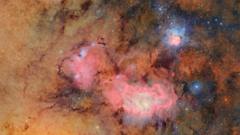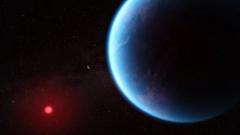In a groundbreaking shift in the pursuit of dark matter, researchers are investigating axions—hypothetical particles as intangible as a thought and humorously named after a laundry detergent. If proven to exist, axions could represent the vast bulk of matter in the universe, forming a hidden framework for galaxies and the shimmering paths of starlight in the heavens. Their discovery could significantly challenge current scientific concepts.
Gray Rybka, a physicist from the University of Washington and spokesperson for the Axion Dark Matter Experiment (ADMX) in Seattle, emphasized the anticipation that surrounds this search. “For nearly 10 years we’ve been operating in a search mode, and any day we could make a discovery,” he noted, as the ADMX employs powerful magnetic fields to try and produce axions.
Meanwhile, astronomers are looking to the skies, examining the rotation of black holes and analyzing the early formations of galaxies identified by the James Webb Space Telescope, to find evidence of axions. However, conclusive proof of their existence has yet to materialize.
The search for axions is pivotal because it touches on one of cosmology's most intriguing enigmas: what constitutes the majority of the universe's mass? Current astronomical observations suggest that only about one-sixth of the universe is composed of ordinary matter—the stars, planets, and galaxies we can see. The remainder is termed dark matter, which despite being invisible, exhibits enough gravitational pull to maintain the structure of the visible universe.
Throughout history, physicists have proposed numerous candidates for dark matter, with axions becoming a leading contender due to their potential to address flaws in the Standard Model of particle physics. As scientists continue to ponder the nature of the universe, the quest for axions remains a thrilling chapter in this ongoing cosmic mystery.











